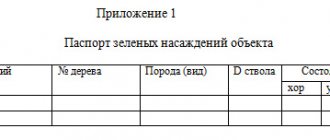Environmental education and its goals
In the endless whirlpool of everyday affairs and worries, in the pursuit of material wealth, we often forget about what gave us the opportunity to live on earth. Nature, the gifts of which people sometimes use so irrationally, gives us not only the opportunity to exist, but also allows us to enjoy its truly unique beauty and instills the best moral qualities.
Environmental education, the purpose of which is to introduce children to the life of nature, instill responsiveness, and the desire to preserve its wealth, is a fairly new section in pedagogy. However, the problems that this educational direction solves are very relevant, because the difficult environmental situation in the world forces us to take immediate measures to prevent a possible natural disaster.
It must be emphasized that environmental education should begin from early childhood, at the moment when the child is just beginning to learn about the world. The child’s attitude towards the surrounding nature depends on how adults guide his actions.
Is it possible to hit a kitten or uproot flowers? Why make bird feeders in winter? A growing person is interested in many questions. And he will look for the answer not in moralizing conversations, but in clear examples demonstrated by adults.
You can talk for a long time and interestingly about how you can’t cut down trees because people won’t be able to breathe, but at the same time you can drive away a hungry dog by shouting or even hitting him. Is it worth saying that such environmental education will be meaningless?
Ecology and life are concepts closely related to each other, so it is important to teach children who are just beginning to explore this unknown vast world, to hear and see with their souls, to realize that they are part of it.
Necessary Definitions
In order to properly use the possibilities of environmental education, it is necessary to understand its essence.
Until recently, nature was studied purely from a biological point of view. However, it has always been called the source of knowledge, since it represents a storehouse of opportunities for personal development. Teachers should take advantage of this, because the essence of environmental education is the ability to find harmony in everything that surrounds a person. Moreover, the education of morality is an integral part of getting to know the natural world, because in order to learn to feel and love miraculous creations, you need to have spiritual potential.
Consequently, the concept of environmental education includes a set of measures aimed at developing the child’s consciousness, developing habits that will be responsible for the individual’s behavior in everyday life and will become the basis of his harmonious worldview.
Consciousness is formed on the basis of knowledge and beliefs, and the idea of nature as the highest harmonious substance is formed in the process of observing the development of the surrounding world.
Correct environmental behavior is based on individual actions, as well as on the assessment of these actions by others and the individual himself.
Speaking about the essence of the teacher’s influence on the environmental development of the child, it is necessary to highlight 2 factors that are the main ones in this process.
1.Stepwise structure of cognition, which is based on the following points:
- representation;
- formation and development of consciousness and emotions;
- beginning to use the acquired knowledge in practice;
- instilling the skills of a proper relationship with nature;
- eradication of consumer attitudes towards natural resources;
- the duration of the process of developing a behavioral line;
- spasmodic development of skills;
- activity of pupils.
2. The significance of the psychological component of the education process, based on the following parts:
- Consciousness;
- Needs;
- Motives;
- Goals;
- Will.
Goal setting and problem solving
The definition of environmental education implies setting a clear goal in the process of developing the necessary skills and abilities. It determines the formation of a caring attitude towards the world around us, based on the moral consciousness of the child. It is important to take into account that the concept of “nature” in the educational process includes the person himself, who is part of it. Consequently, environmental culture is part of a person’s general education.
Ecological culture is a complex, multifactorial concept that includes the following components:
- Knowledge of the laws of natural life;
- Compliance with rules that imply careful treatment of natural gifts;
- Activities for the study of natural resources and their conservation;
- Propaganda work.
The set goal is realized subject to a comprehensive solution to the problems of environmental education:
- Educational, with the help of which students are provided with a system of knowledge about environmental problems and the possibilities of their resolution;
- Educational, aimed at developing motivational habits of correct environmental behavior, the desire to lead a healthy lifestyle;
- Developing, promoting the development of theoretical and practical skills and abilities, the ability to assess the state of the environmental situation in their region and the world.
In any case, ecology and life are the subject of study of upbringing and education, since the goals and objectives determine the knowledge and perception of objects in the surrounding reality.
The system of educational process of environmental development includes the following areas:
- Political;
- Scientific;
- Legal;
- Moral and aesthetic;
- Worldview.
Each of these components determines the directions and forms of the teacher’s work.
Means of educational influence
To effectively develop the correct worldview in children, aimed at protecting natural resources, teachers use different forms and means of environmental education.
Each component in this system is designed to develop the comprehensive cognitive activity of children. These include independent research of popular science literature, game complexes, observation of natural phenomena, and others.
Methods of environmental education are selected taking into account the level of development and preparation for the perception of information of children. Let's consider several stages of work and criteria for choosing methodological tools.
The initial stage involves the selection of such forms and means of work that will help analyze and correct the information and motivation that children already have about the environmental problem. Using conversation methods, the teacher evokes an emotional response in students and forms a personal perception of the problem situation.
The next stage of cognition is based on methods that stimulate children’s independent activity. Discussions are very effective, they will summarize the experience gained and allow you to gain independent judgment skills.
The theoretical justification of the presented environmental problems requires the use of a lecture by a teacher who will provide scientifically proven facts of environmental problems at different levels: local, local, global.
Any cognitive activity requires the expression of a moral choice, with the help of which previously made decisions are generalized and the aesthetic needs of children are developed. In this case, methods need to be selected based on creative media: fine arts, fiction, cinema, etc.
Games, including role-playing, will provide psychological preparation for the correct guidelines in the field of environmental problems.
There are a large number of universal methods that can be used at all stages of working with children. Let's list some of them:
- Observation, analysis, reflection of objects of living and inanimate nature;
- Experiments and experiments;
- Labor activity based on the skills of caring for flowers, living areas, etc.;
- Educational and propaganda activities, including lectures, debates, events, weeks of environmental promotion;
- Excursions, expeditions, experiments.
The leading methods of the education process included encouragement, control and punishment. In this case, the punishment is humane and does not humiliate the personal dignity of the student.
The importance of choosing the right methods is difficult to overestimate. After all, the formation of an environmentally literate and educated personality depends on their effectiveness.
Family values
A child should understand how ecology and life are connected from a very early age. And since his life path originates in the family, parents bear great responsibility for the formation and development of all the personal qualities of their offspring.
What a good attitude towards nature is, what actions are not permissible to perform in relation to all living things, the baby learns in the process of observing the actions of the people closest to him.
Each piece of paper thrown past the ballot box by the mother, or the contemptuous attitude towards the stray animals of the father will firmly enter the child’s consciousness as an algorithm of actions that he will certainly repeat in the future.
The authority of parents is so unquestionable in the eyes of children that they do not need additional lectures or stories about correct behavior. Therefore, adults should not be surprised why, in adolescence, their children show aggression towards animals, do not clean up garbage after themselves in the forest, and do not understand at all why they need to save water.
The example of parents is the main, determining method of family environmental education.
For parents of preschool children
Any educational impact is based on contact between the teacher and the student. Young children need clear guidance from adults as they are just beginning to come into contact with the amazing world of nature. Parents can use the following means of instilling a humane attitude towards the riches of nature:
- Walking is a great way to observe natural life. At the same time, it is absolutely not necessary to go on long hikes, because there are many interesting things near the house that will tell you about the life of nature.
- Communicate with your baby, paying attention to everything that surrounds him: how the flowers smell and the leaves sway, how wet the grass and the kitten’s fur feel to the touch. From these small but very important details begins the knowledge of natural wonders.
- Name every object and phenomenon that you encounter during your daily walks. You can use literary poems, folk songs and sayings. With their help, the child will not only learn the necessary names, but also expand his vocabulary.
- Take care of flowers. The ideal solution would be to plant a plant together with your baby, regularly caring for it and watching its growth. The first independent discovery will be an important step in the moral development of the baby, because it will prove that all living things need care, love and care.
- Make crafts using natural materials. In parallel with the development of fine motor skills, you will teach your child to use “recycled” raw materials in the form of dry leaves, sticks and cones to create “masterpieces” of art.
- Read works of fiction devoted to the topic of ecology and the protection of natural resources. Discuss the actions of the characters, transfer their actions into your everyday life and analyze similar situations.
Ecological development of schoolchildren
During school years, when the main activity of children is intellectual knowledge, environmental education is built on the basis of educational activities. It is important to develop the following skills:
- Formation of skills in design and creative activities;
- Developing the right position towards the use of natural resources;
- Acquiring the necessary knowledge about a healthy lifestyle;
- Discussion skills training.
During the period of study at school, the source of environmental education is training sessions, electives and interest groups. The priority areas of activity are research and labor activity. On their basis, the professional orientation of students is formed.
Like any educational influence, environmental development at different age stages has its own characteristics, which must be taken into account. Individual and psychological differences in children also influence the choice of means to achieve their goals and objectives.
Using these recommendations, you can help your child enter the wonderful world of nature, acquire harmony, and learn to appreciate all its resources. Children who have received the right environmental education are able to create a society that can prevent future global changes in the world ecology. They will be able to enjoy the beauty of nature’s creations and contribute to its development.
The upbringing of a new generation of people capable of preserving and increasing natural resources depends only on the correct integrated influence of educational institutions and the family.




